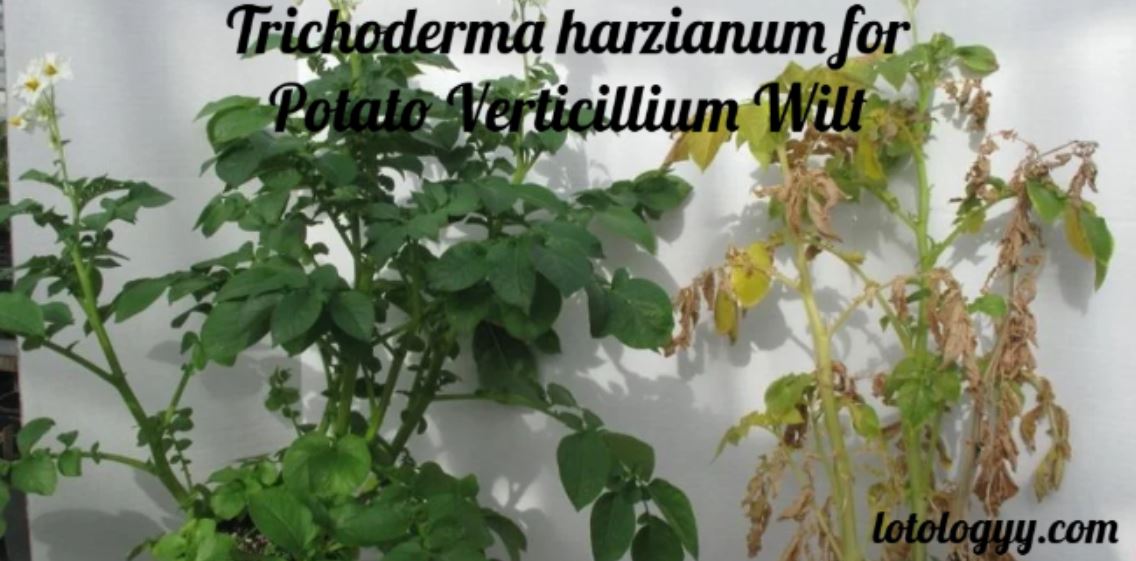Understanding the Threat Posed by Verticillium Wilt in Global Potato Production
Potatoes are most of the world’s most cultivated food crops, gambling a critical role in food security and the rural economic system. However, Verticillium wilt has emerged as a extreme soil-borne fungal disease threatening potato yields international. Caused on the whole via Verticillium dahliae and Verticillium albo-atrum, this vascular wilt ailment reduces productivity and weakens the plant substantially. The fungi block the xylem vessels, leading to water strain, leaf chlorosis, necrosis, and sooner or later plant demise—frequently with intense yield penalties. The long lasting microsclerotia of the fungus permit it to live to tell the tale in the soil for years, making it a continual chance even after crop rotation.
Limitations of Traditional Management Practices for Verticillium Wilt
Managing Verticillium wilt is tough due to the pathogen’s longevity in the soil and its wide host range. Traditional techniques consist of lengthy-time period crop rotation, planting resistant types, using chemical fungicides, and keeping sanitation practices. However, these techniques regularly provide constrained and inconsistent success. Chemical remedies can lead to environmental pollution, improvement of resistant pathogen strains, and disruption of useful soil microbiota. The growing demand for sustainable agriculture has made organic manage a favored alternative in cutting-edge integrated disease management programs.
Biological Control Using Trichoderma harzianum as a Sustainable Alternative
Trichoderma harzianum, a certainly taking place soil fungus, has emerged as a promising biocontrol agent towards numerous plant pathogens, consisting of Verticillium wilt. It is extensively utilized in agriculture for its antifungal houses, plant-growth-selling effects, and environmental safety. As a organic manipulate agent, T. Harzianum is understood for its adaptability to diverse soil situations, its capability to colonize plant roots, and its multifunctional mechanisms of movement that disrupt the life cycle of soil-borne pathogens.
Modes of Action by Which Trichoderma harzianum Suppresses Verticillium Wilt Pathogens
- harzianum works through several synergistic modes of action:
- Mycoparasitism: It parasitizes the pathogen by coiling around its hyphae and breaking down cell walls using hydrolytic enzymes such as chitinases and glucanases.
- Antibiosis: It produces antifungal metabolites that inhibit spore germination and mycelial growth of Verticillium species.
- Competition: It competes aggressively for nutrients and physical space in the rhizosphere, limiting pathogen proliferation.
- Induced Systemic Resistance (ISR): It activates plant defense systems, enabling the host to better resist pathogen invasion.
- Enhancement of Soil Microbial Balance: It promotes beneficial microbes that suppress disease-conducive organisms.
The Role of Enzymes and Secondary Metabolites in Pathogen Suppression
- harzianum secretes a wide range of enzymes and metabolites that target fungal pathogens. Key enzymes include:
- Chitinases – degrade chitin in fungal cell walls.
- β-1,3-glucanases – break down glucan linkages essential to fungal structure.
- Proteases – dismantle protein components of cell walls.
Important antifungal secondary metabolites include:
- Gliotoxin
- Harzianic acid
- Viridin These compounds create a hostile microenvironment for Verticillium species, thereby curtailing their spread.
Enhancing Trichoderma harzianum Performance with Organic Amendments and Compost
Tea. Herzianm shows better colonies and efficacy when combined with organic soil modifications. Compost, neem cakes, and farmyard manure can improve soil structure and availability of nutrients, supporting Trichoderma development. Organic substrates also reduce pathogen loads and enrich microbial variety by increasing natural disease suppression. Studies suggest that integrated Trichoderma not only improves disease resistance with compost, but also plants power, root mass and tuber quality.
Methods of Applying Trichoderma harzianum for Managing Verticillium Wilt in Potatoes
Several application methods ensure effective use of T. harzianum in potato fields:
1. Seed or Tuber Coating
Potato tubers can be coated with T. harzianum spores before planting. This method helps early root colonization and protects emerging seedlings.
2. Soil Application
A spore suspension or granular formulation is incorporated into the soil before planting. This allows Trichoderma to colonize the rhizosphere and interact with pathogens early.
3. Compost Inoculation
- harzianum can be added to compost piles, which are then applied to fields. The compost serves as both a nutrient-rich medium and a delivery vehicle.
4. Root Drench or Irrigation Integration
It can be applied via irrigation water (fertigation), ensuring uniform distribution across the root zone.
Impact of Trichoderma harzianum on Potato Yield and Plant Health
Research and field experiments have consistently shown that T. harzianum improves potato plant health and productivity. Benefits include:
-
- Lower incidence and severity of Verticillium wilt
- Higher chlorophyll content and photosynthetic efficiency
- Improved root architecture and nutrient absorption
- Enhanced tuber size and yield In several trials, yield increases of 20–30% were reported in fields treated with Trichoderma compared to untreated controls.
-
Integration with Other Management Practices for Greater Effectiveness
To optimize results, Trichoderma should be used in combination with other sustainable practices, including:
-
- Resistant Potato Varieties: Some cultivars possess moderate resistance to Verticillium and respond well to biological protection.
- Soil Solarization: Using plastic sheets to trap solar heat reduces pathogen populations and enhances Trichoderma colonization.
- Crop Rotation with Non-hosts: Rotating with cereals or brassicas can reduce Verticillium density in soil.
- Proper Irrigation Management: Avoiding waterlogging and over-irrigation helps
- maintain Trichoderma activity in the root zone.
-
Challenges Associated with the Use of Trichoderma harzianum in Field Conditions
Despite its many advantages, there are challenges in the widespread adoption of T. harzianum:
-
- Variable Field Performance: Environmental factors such as pH, temperature, and soil moisture affect its efficacy.
- Short Shelf Life: Biological formulations are perishable and require proper storage conditions.
- Limited Farmer Awareness: Many smallholder farmers are not yet familiar with biocontrol agents or trained in their application.
- Regulatory Hurdles and Certification: Registration and approval processes for microbial pesticides can be complex and country-specific.
-
Future Opportunities and Research Directions for Maximizing Trichoderma Use
needed in areas such as:
-
- Strain Selection and Genetic Improvement: Identifying highly efficient and stress-tolerant strains through molecular tools.
- Formulation Technology: Developing dry and liquid formulations with longer shelf life and enhanced stability.
- Field-Level Validation Across Agroecological Zones: Conducting trials in diverse environments to generate reliable farmer-ready protocols.
- Synergistic Use with Other Microbial Agents: Combining Trichoderma with beneficial bacteria like Bacillus subtilis or Pseudomonas fluorescens for improved results.
- Farmer Training and Outreach Programs: Increasing education on sustainable disease management and biopesticide use.
-
Conclusion: Toward Environmentally Responsible Control of Potato Diseases
- Verticillium wilt stays an impressive undertaking for potato growers, however the growing adoption of green tools like Trichoderma harzianum is a step in the right direction. Its multi-pronged technique—such as antagonism, parasitism, and immune gadget activation—gives sustainable and long-term protection towards soil-borne pathogens. While no longer a complete replacement for all conventional strategies, it plays a pivotal position in integrated ailment control. With continued innovation, studies support, and farmer training, Trichoderma harzianum can help shape a more sustainable and productive destiny for potato farming.










